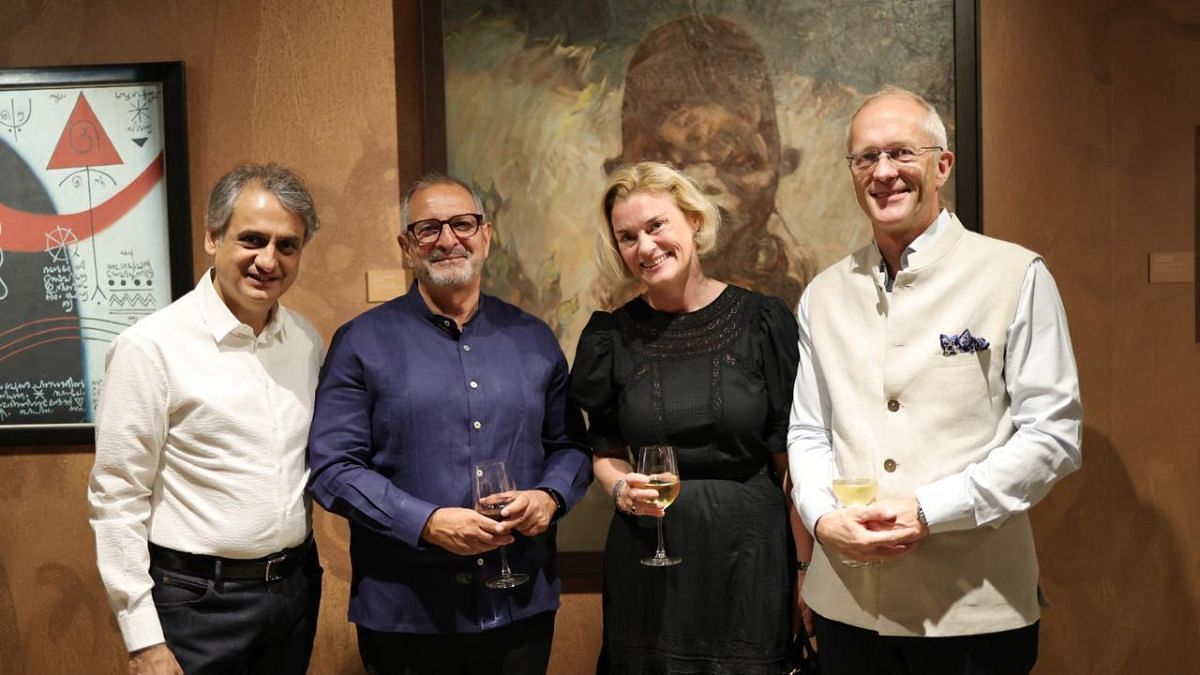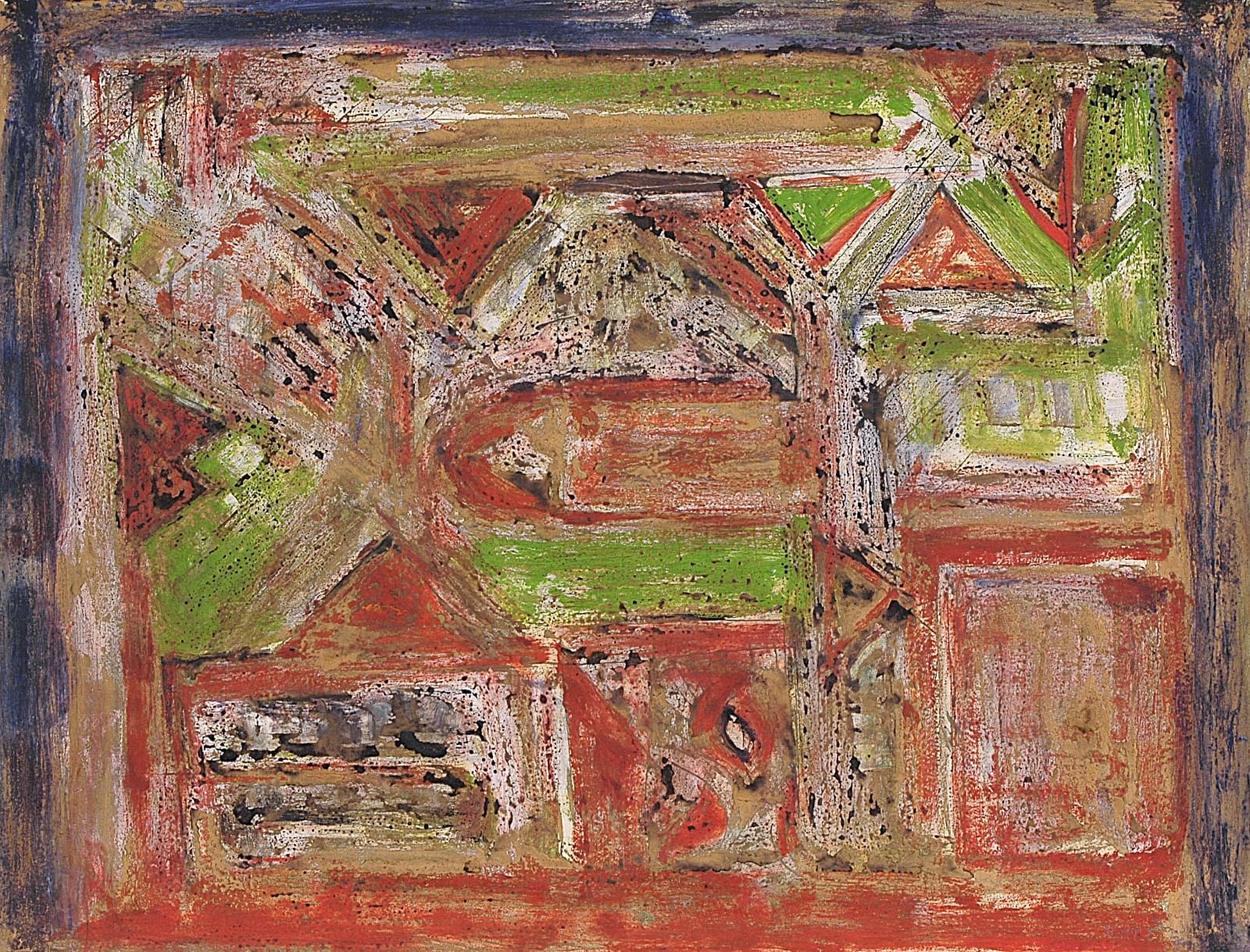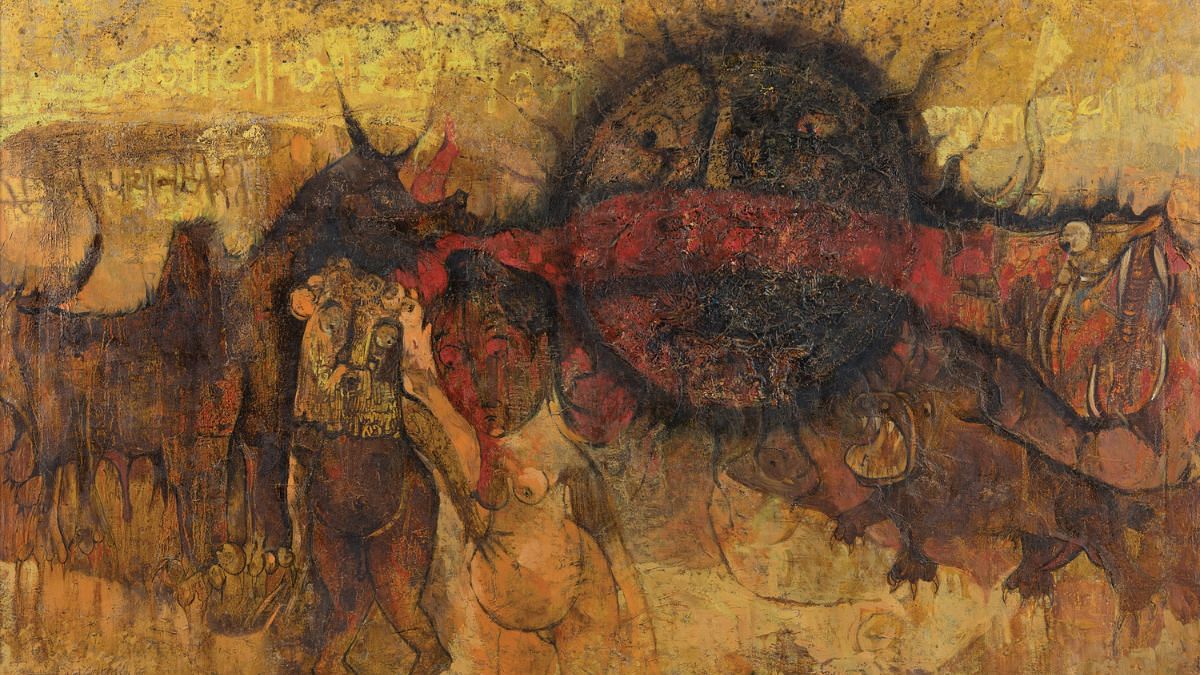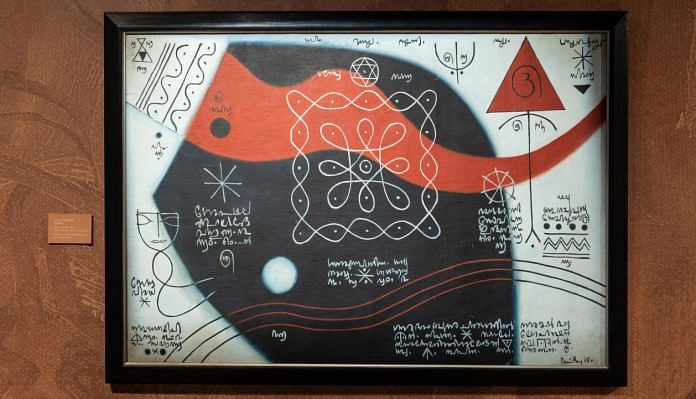New Delhi: By the time renowned modern artist KCS Paniker took over as the principal of the Madras School of Art in 1958, it was already clear to him that it was time to go back to the roots.
His 1954 exhibition in London had one take away. It wasn’t enough to be just modern, his paintings had to be Indian too.
Art critic Ludwig Goldscheider had said that his art lacked the feeling and authenticity of the ‘Indian’, a criticism that haunted Paniker.
“A European artist is faced only with the art of his own past (from the time of the Greeks to Picasso) but he can safely ignore the East…an Indian artist, on the other hand, cannot merely study the Ajanta and Tanjore wall paintings and imitate them on a smaller scale—this would not make him a modern master: he has to go through the school of world art,” Goldscheider wrote in a personal letter to Paniker. “But to become a genuine artist, he is not allowed to forget or suppress his racial and national ways of seeing, feeling and shaping—he has to be an Indian artist or nothing at all.”
This critical input changed the course of the colonial-era Government School of Arts and Crafts under Paniker. It had already got a much-needed makeover under the Bengal painter DP Roy Chowdhury when it transitioned from being a craft hub to a visual arts college. Chowdhury brought in the sensibilities of Santiniketan movement to Madras and introduced artists to a combination of realism of the British painters and the idealised beauty of the Bengal school.
But Paniker’s London visit had a profound impact on the institution and the artwork it began producing. It reinforced the importance of the ‘local’ in the ‘modern’.
A new exhibition at the DAG in New Delhi titled ‘Madras Modern: Regionalism and Identity’ chronicles this journey of artists such as Paniker, L Munuswamy, Velu Viswanathan, J Sultan Ali, AP Santhanaraj, Alphonso Arul Doss, RB Bhaskaran and KM Adimoolam. They were the ‘Late Moderns’ of India.

Also read: Is Delhi really a city of gardens? Mughals, British & CPWD laid them very differently
Discovery of non-Western cultures
The search for cultural authenticity has always been a necessary quest of the global art world. It can cut both ways—push artists to dig into the roots of their identity and also trap them in provincialism. The international art market—dominated by Western art czars and collecting elites—is a congenital frontier-hunter with a constant need to ‘discover’ the next big continent each time and present it as the new flavour of the art world. Discovery is, of course, a politically loaded word but many around the world use it quite unmindfully. It’s the standard template of how art, commerce and culture coalesce.
So, it wasn’t unusual that the critic urged Paniker to look within. The irony was that to be a ‘modern’ artist in Europe, you had to break from the past. But here, Paniker was being encouraged to renegotiate with his past. That’s how the process and market of ‘discovery’ of non-Western cultures operates even today.
The Latin American art was discovered as a collecting category in the late 1970s with the promotion of artists such as Diego Rivera and Wifredo Lam. More recently, 1-54 art fair in New York has catapulted African contemporary art into the realm of critical engagement in the West.
Leading the way
Paniker was trained under DP Roy Chowdhury in European naturalism and impressionism. But his brush with the London art aficionados made Paniker a ‘leading torchbearer for Indianness’ in the modern art movement in southern India. He founded the Cholamandal artists village and initiated a dialogue with local art forms to reinvent and reinterpret pictorial traditions, which was a conscious attempt towards defining the contours of the regional modern, says the exhibition catalogue.
His own paintings went from idealised landscapes in the Bengal style to establishing a regional specificity – he dived into the world of mythology and Hindu horoscopes. A series of paintings titled ‘Words and Symbols’ portrayed a combination of images and ideas drawn from ancient astrology, script, mathematical configurations and southern temple floor decorations known as kolam.
Paniker led a whole group of artists in the same direction.
Velu Viswanathan, who came from a family of the religious elite acharis (head of the priest class), who designed and built the sanctum sanctorum of Hindu temples, began to paint geometrical designs of the same. Working out of Paris and Cholamandal, Viswanathan’s exploration of the triangle as the central core of identity, religion and philosophy was the signature look of his later paintings. Earlier, he was painting nudes. But under Paniker’s mentorship, he investigated within.

Sultan Ali painted religious motifs combined with scripts and images; and Bhaskaran and Haridas worked with neo-tantric motifs.

Art in isolation
All this was occurring in the Madras school just as the modern art phenomenon in the rest of India was receding. It missed the modernism bus because the Madras school of art was focussed on crafts and skills for too long—woodwork, jewellery, cabinetmaking, metalworking.
Despite being a latecomer in the movement, Madras struck anew with its romance of the old. But even so, they worked largely in isolation.
“They were the last, last breath of modernism. It was already ebbing in the rest of the country,” said Kishore Singh, Senior Vice President of the DAG, during a curatorial walkthrough of the exhibition. He spoke about the dominance of the other centres and how the Madras artists remained outside the art conversations and didn’t feature in the progressive art movement. “These artists had always been under-represented in art centres. They remained in Chennai. Nobody got them to Delhi and Bombay.”
The exhibition catalogue cites an exchange that crystallised this tension.
Art critic AS Raman asked J Swaminathan, who helped set up the Bhopal Bharat Bhavan, “Why do you in the north keep the south Indian artists out of your exhibitions?”
Swaminathan replied, “Where are the artists in south India?”
The exhibition is open till 6 July 2024.
(Edited by Ratan Priya)




